An Ultimate Guide to Types of Cheese
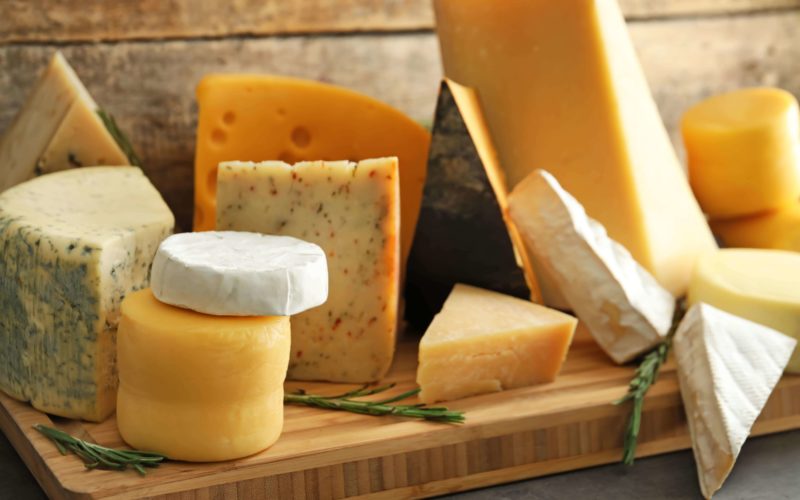
Many people will claim that cheese is one of the most popular and delicious foods in the world. There are countless types of cheese that can be used for all sorts of different dishes or meals. Understanding the ins and outs of all cheeses can help you navigate your meal preparation and recipes much easier.
Our ultimate guide to types of cheese will help you discover the differences in specific cheeses’ colors, textures, and flavors, so you can always choose the correct cheese to pair with what you’re serving to your friends, family, or guests.
Skip ahead?
Cheese Ingredients
The first step in learning how to select cheese is understanding how it’s made. While there are countless types of cheeses, they all can be broken down to the same four original ingredients:
- Milk
- Salt
- Culture
- Enzyme
All cheese may be made from the same ingredients, but the more you learn about each type, you’ll see that they can end in different tastes, textures, and colors.
5 Different Types of Cheeses and Their Uses
Having a guide to types of cheese can be helpful when it comes to many different scenarios from entertaining for the holidays to simply cooking for your family. Cheese can play a key role in any dish or snack, which is why it’s important to understand the different types of cheeses and their uses.
Pairing the correct cheese with other flavors could make or break your meal. The most important thing to remember is that as a cheese ages, so will its color, texture, and flavor. We’ve gathered the 5 main types of cheeses so you can learn how they differ from each other the more they age.
1. Fresh Cheeses
Fresh cheeses are the youngest type of cheese and hold the most moisture. This means they’re unaged, unripened, and rindless. These cheeses are also white on the outside as well as the inside. The texture can vary depending on how the paste is originally made, but the taste is most likely the same mild, and slightly acidic with only a hint of flavor. Some of the most popular fresh cheeses include:
Ricotta
- Type of milk: cow, sheep, goat, or buffalo
- Flavor: mild, fresh, slightly sweet
- Accompaniments: honey, strawberries, bananas, jams, pesto, eggs, and tomatoes.
Feta
- Type of milk: sheep or goat
- Flavor: tangy, salty, pungent
- Accompaniments: cucumbers, tomatoes, and red onions
Mozzarella
- Type of milk: cow or buffalo
- Flavor: mild, milky, slightly acidic
- Accompaniments: olive oil, tomatoes, basil, and grilled vegetables
Mascarpone
- Type of milk: cow
- Flavor: slightly sweet, buttery, rich, slightly tangy
- Accompaniments: strawberries, honey, and chocolate
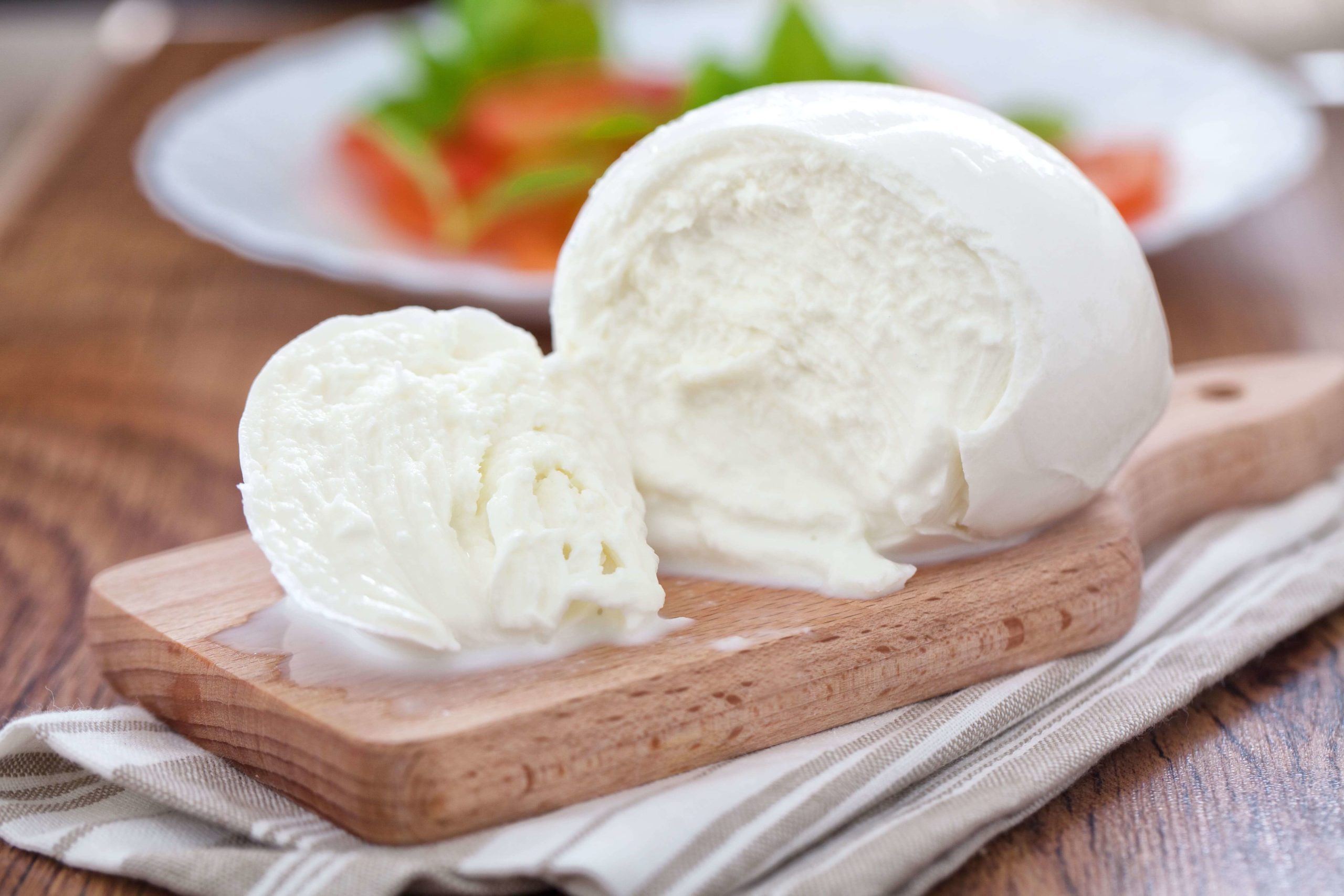
2. Soft-Ripened Cheeses
These cheeses are ripened from anywhere between 1-30 days. They contain a high amount of moisture as well as fat content. Soft-ripened cheeses are best served at room temperature, and because of this, they tend to have a pudding-like texture and appearance.
They all share the same type of buttery taste with a hint of sweetness. Some of the most commonly used soft cheeses include:
Brie
- Type of milk: cow
- Flavor: light, buttery, slightly salty
- Accompaniments: green apples, pears, fig jam, and honey
Camembert
- Type of milk: cow
- Flavor: hay, umami, earthy
- Accompaniments: cantaloupe, baguette, and pecans
Chaource
- Type of milk: cow
- Flavor: buttery, mild
- Accompaniments: baguette, and fig jam
Chevre
- Type of milk: goat
- Flavor: bright, tangy, slightly sweet
- Accompaniments: figs, balsamic dressing, peppery greens, beets, almonds, apples, and baguette

3. Semi-Soft Cheeses
Semi-soft cheeses are denser, earthier, and can be more pungent. Since these cheeses are lightly pressed into molds, they have a rubbery layer on the outside, but still offer a soft, custardy center when cut into. Semi-soft cheeses often have a thick, buttery, and sweet taste with a rind that ranges from sticky and thin to leathery and coarse. Some of the more popular semi-soft cheeses include:
Havarti
- Type of milk: cow
- Flavor: buttery, slightly acidic, sharp
- Accompaniments: figs, walnuts, rustic bread, and raisins
Muenster
- Type of milk: cow
- Flavor: mild, sweet, roasted nuts
- Accompaniments: apples, dried fruits, pears, and beef
Provolone
- Type of milk: cow
- Flavor: silky, firm, smooth
- Accompaniments: dried plums, cherries, olives, roasted red peppers, and toasted bread
American
- Type of milk: cow
- Flavor: mild, salty
- Accompaniments: bacon, crusty bread, tomatoes, and other cheeses
Taleggio
- Type of milk: cow
- Flavor: meaty, tangy, pungent
- Accompaniments: honey, mustard, chestnuts, and polenta
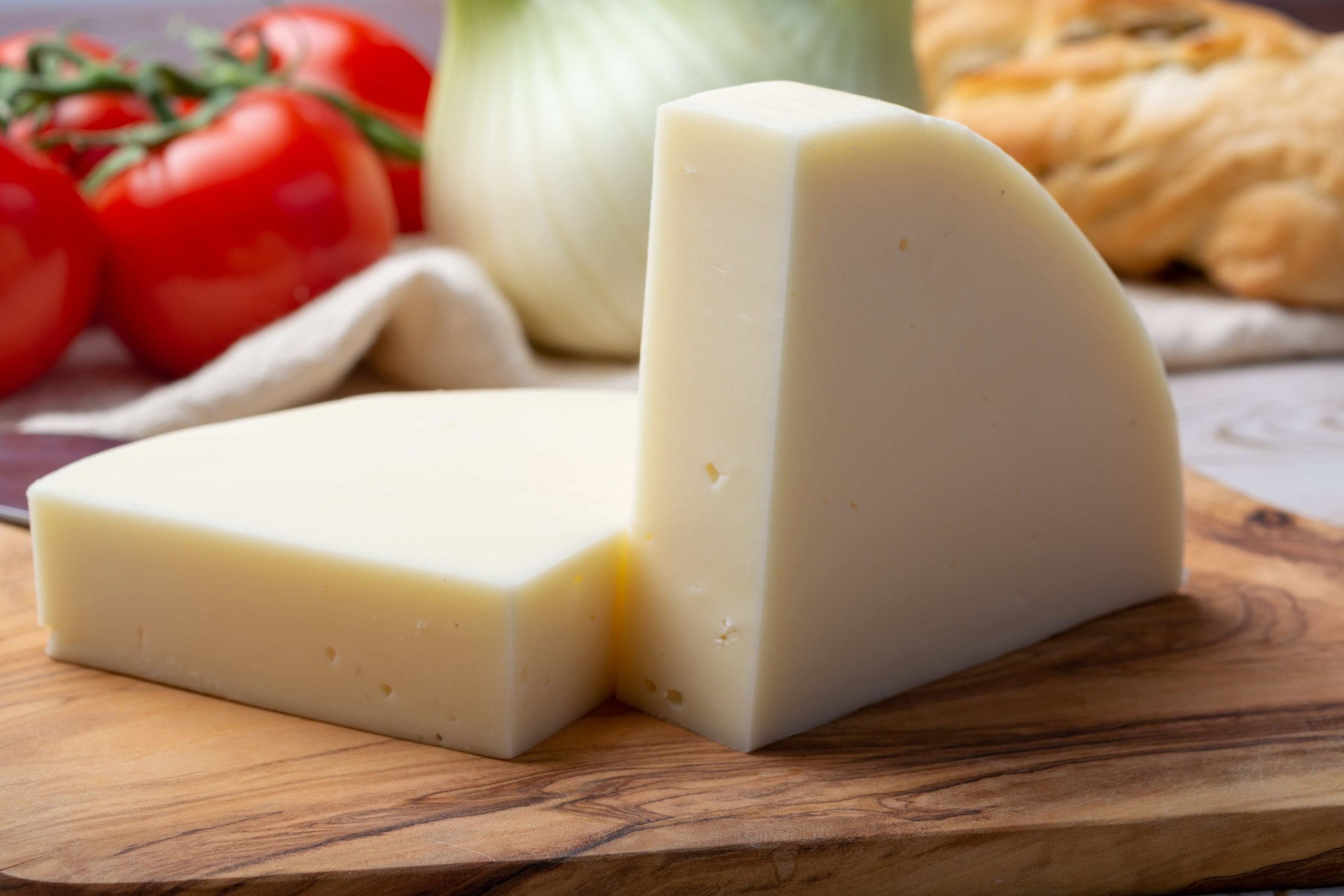
4. Semi-Firm Cheeses
The longer a cheese ages, the more firm it’ll become. Semi-firm cheeses start to develop a wider range of flavors from floral, to fruity, and even sometimes buttery.
These cheeses are firmer than soft cheeses, but still not quite firm enough to be categorized as hard cheese. This makes them perfect for slicing and shredding rather than grating or spreading. Some of the most common semi-firm cheeses include:
Cheddar
- Type of milk: cow
- Flavor: umami, sharp, bold
- Accompaniments: apples, cherries, walnuts, cashews, and dill crackers
Edam
- Type of milk: cow or goat
- Flavor: creamy, nutty, slightly salty
- Accompaniments: cherries, apricots, peaches, and melons
Emmental
- Type of milk: cow
- Flavor: buttery, mildly nutty, slightly sharp
- Accompaniments: apples, peaches, pears, and grapes
Gouda
- Type of milk: cow or goat
- Flavor: caramel/butterscotch, browned butter, intense
- Accompaniments: spicy nuts, olives, oat crackers
Gruyere
- Type of milk: cow
- Flavor: sweet, slightly salty, complex
- Accompaniments: sliced pears, figs, rosemary, and broiled on top of soups
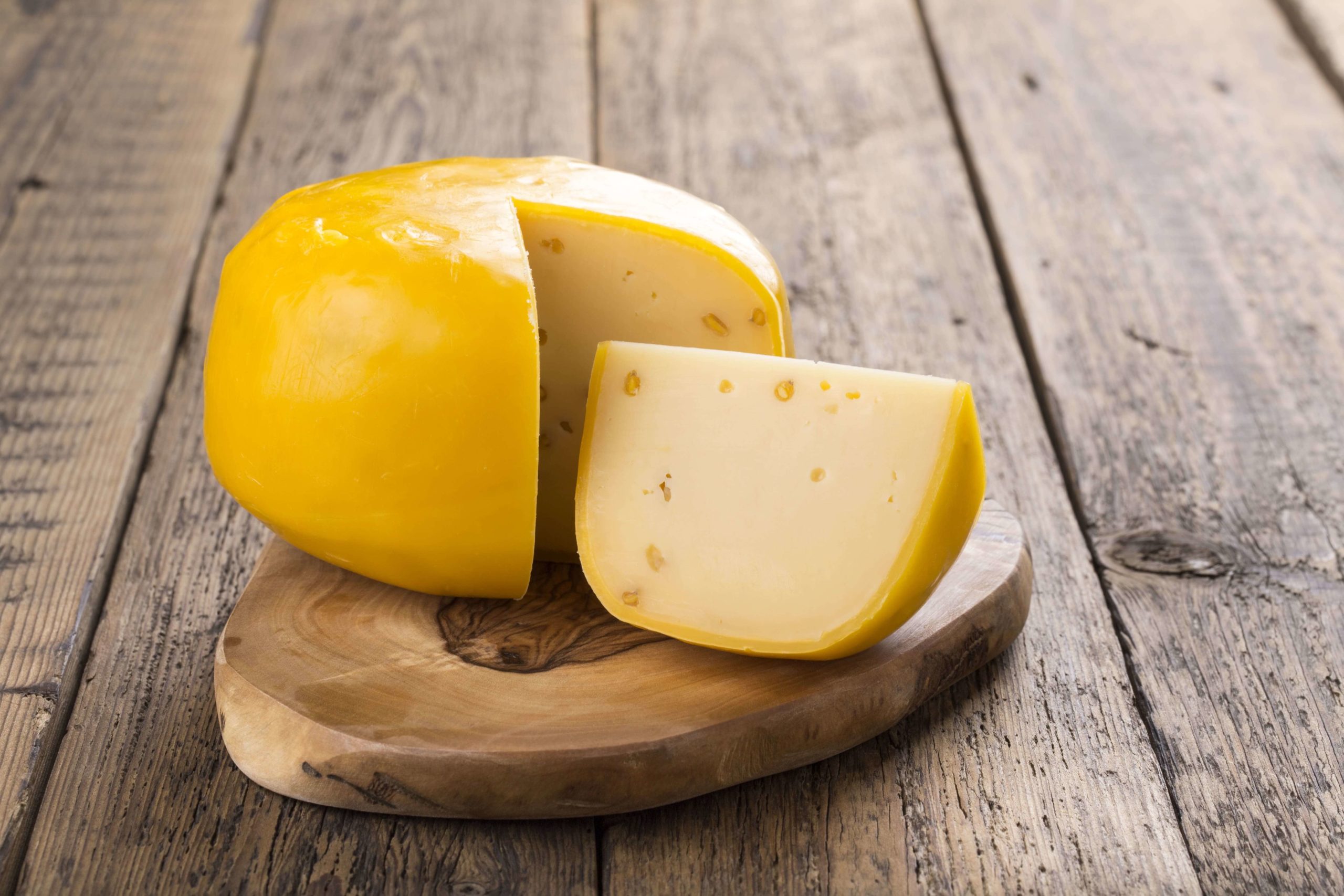
5. Hard Cheeses
Hard cheeses are the types that have been aged the most. These are dry-textured cheeses full of deep, potent, and savory flavors. Since they have the lowest amount of moisture, they can even be categorized as crunchy.
Hard cheeses are rich in taste which means that a little goes a long way, which makes them best grated or sliced very thinly. Some of the most popular hard cheeses include:
Asiago D’Allevo
- Type of milk: cow
- Flavor: milky, sharp, savory
- Accompaniments: figs, grapes, candied pecans, and rustic bread
Grana Padano
- Type of milk: cow
- Flavor: full-bodied, savory
- Accompaniments: dried fruits, honey, apples, arugula, and figs
Manchego
- Type of milk:
- Flavor: creamy, tangy, semi-sweet, salty
- Accompaniments: honey, marmalade, and almonds
Parmesan
- Type of milk: cow
- Flavor: salty, nutty, spicy, slightly floral
- Accompaniments: prosciutto, balsamic vinegar, spiced quince, spiced nuts
Pecorino
- Type of milk: sheep
- Flavor: aromatic, pungent, soft spices
- Accompaniments: dry-cured meats, walnuts, winter vegetables, and sausage
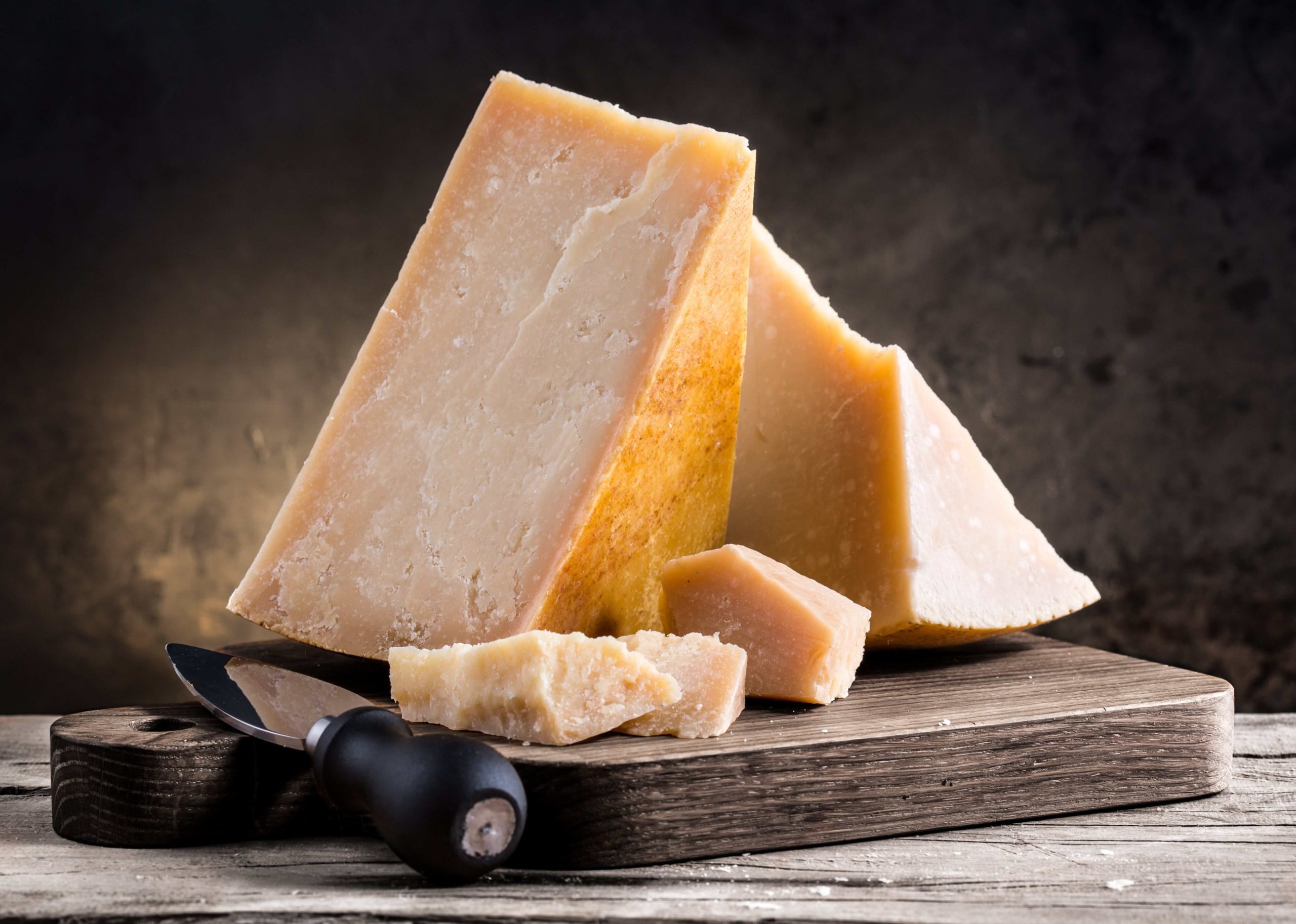
Best Cheese for Different Cooking Methods
Another very important aspect in this guide to types of cheese is understanding which ones work best for different cooking methods. From sandwiches to pasta, to the toppings of soups and salads, you need to know which cheese you should choose to add to your plate.
Below we’ve taken the best cheese for different cooking methods and broken up the types of cheeses that will be the most suitable. Remember to keep in mind the flavor of the cheese as you continue to decide how to use it.
Grating
These are the cheeses that you’ll want to top off your soup, salad, or pasta dish. They taste delicious with any meal and can be finely grated with ease so you can add it as a finishing touch.
- Asiago
- Pecorino
- Manchego
- Parmesan
Slicing
If you’re a sandwich or burger lover, you’ll want a cheese that slices well, and if needed, melts well too. Whether it’s cold or toasted, these cheeses are the best options to make your meal complete.
- American
- Cheddar
- Edam
- Gouda
- Gruyère
- Havarti
- Mozzarella
- Muenster
- Provolone
Shredding & Melting
When you’re planning on making a dish like macaroni and cheese, cheesy casserole, or pizza, you want a cheese that shreds and melts easily. These cheeses will ensure you can make your recipe with ease and taste just as delicious.
- American
- Cheddar
- Gouda
- Gruyère
- Mozzarella
- Muenster
- Provolone
Cheese Pairing Guidelines
We’ve already covered some nice cheese pairings, but to complete our guide to types of cheese, we’d like to give you some guidelines you can follow in case you get stuck. These rules aren’t written in stone, but they can be helpful if you find yourself wondering about a certain pairing.
Go With Where It Grows
If you’ve hit a roadblock and are unsure of which cheese to pair with something, the best thing you can do is go back to its origin. This means, if you have an Italian wine, try using Italian cheese. When matching heritages, you can rarely go wrong. If they’re from the same region geographically you can assume they’ll make a good pair.
Match the Strengths
When selecting the right cheese to accompany a certain food or drink, always make sure you’re being consistent in the tastes. In other words, if you want to use a lighter, milder cheese, don’t serve it with something that will overpower the taste. Keep in mind that the more aged and dense the cheese, the heavier or more flavorful your pairing can be.
Start Small
No matter what you’re using your cheese for, you should start with smaller portions, especially if you’re creating a charcuterie or cheese board. Cheese can be a very rich and filling food so don’t get carried away with using multiple types at once. Start by choosing 1-3 types of cheese and slowly work your way to making your meals, snacks, or appetizers more complex.

Start experimenting with different cheeses today! Stauffers of Kissel Hill offers a variety of cheeses that can be used for any occasion.
